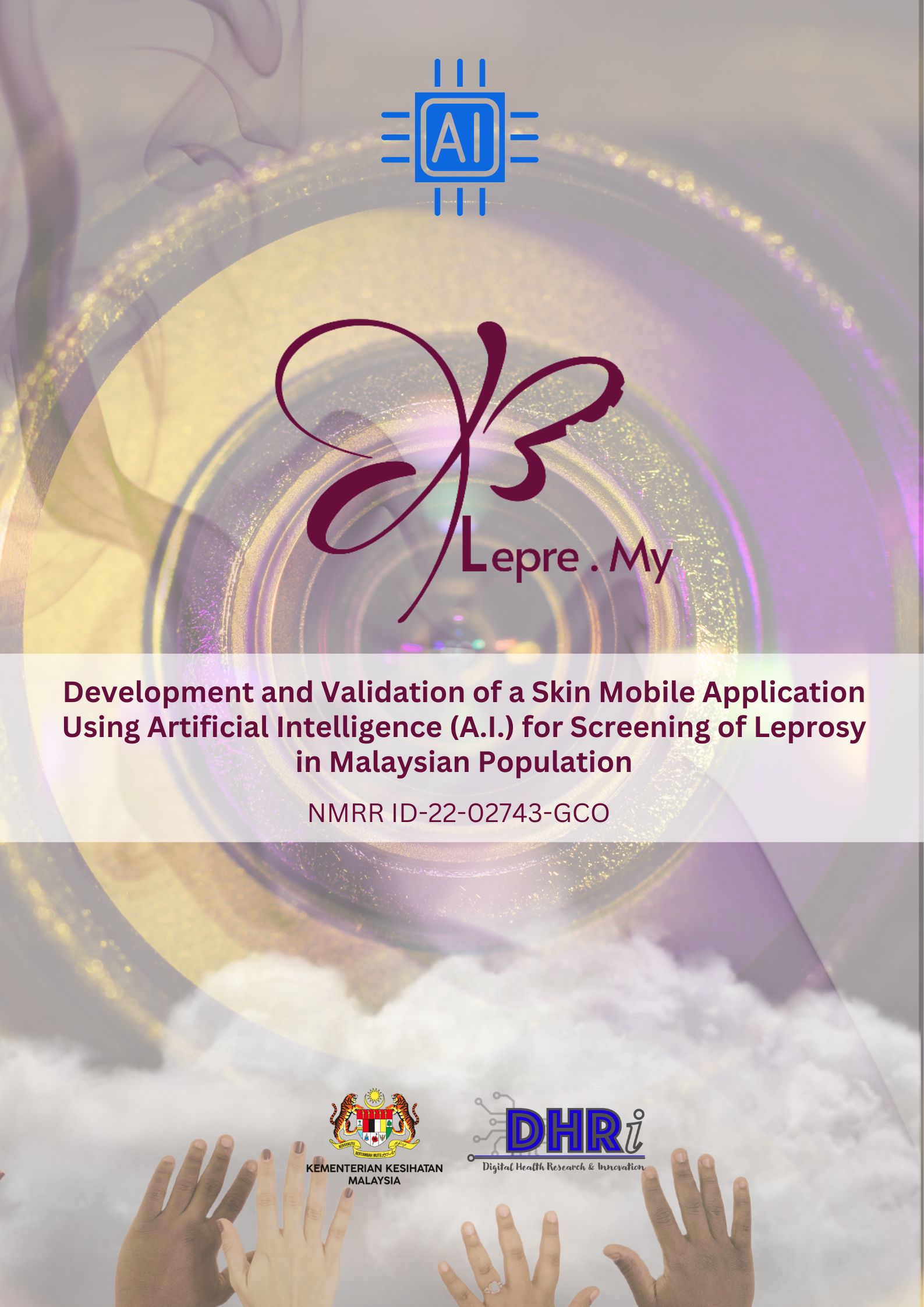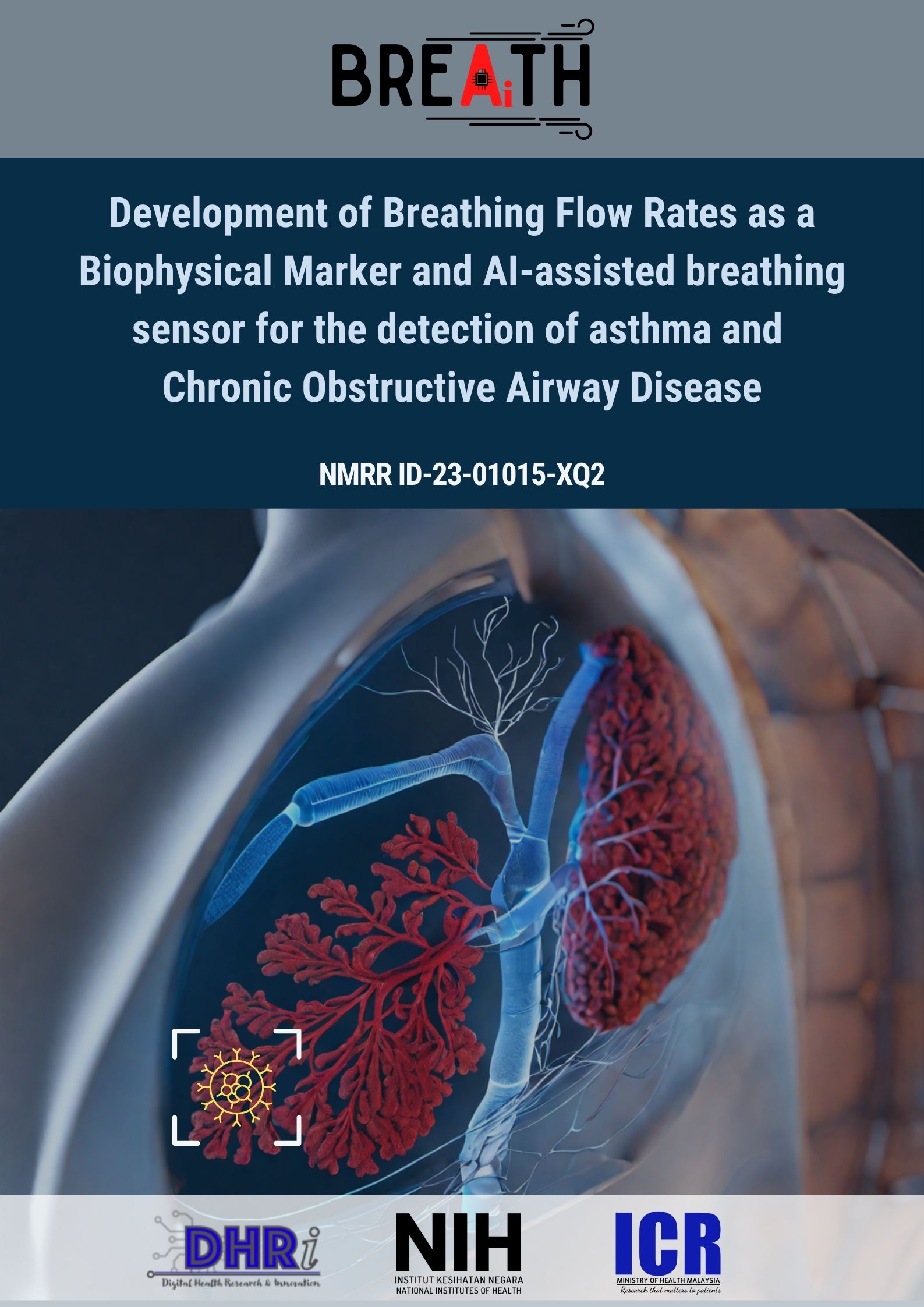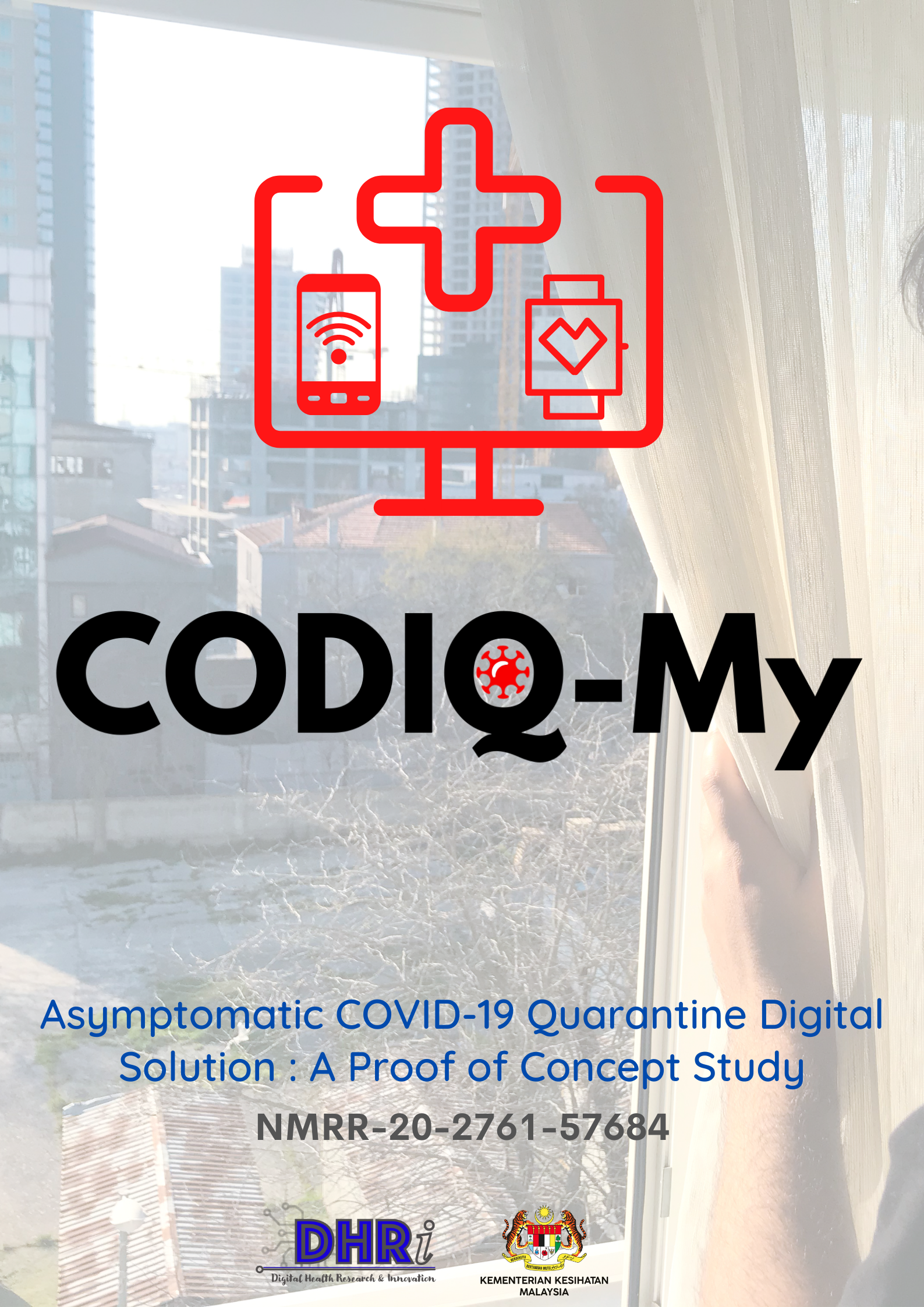REAL WORLD APPLICATION OF A DIGITAL HEALTH SOLUTION: COGNITIVE OBSERVATIONAL DIAGNOSIS FOR QUANTIFIED HOME MONITORING (CODIQ - My)
NMRR ID-22-01042-SDM
The COVID-19 pandemic has highlighted vulnerabilities in healthcare systems, with profound implications for public health, economic progress, and social cohesion. In response to this crisis, there is a growing demand for large-scale population screening and monitoring, and digital health solutions, particularly remote monitoring, have emerged as valuable tools to address this need. Remote monitoring offers distinct operational and design features well-suited to the challenges posed by not only COVID-19 but also but any other medical emergencies, including asynchronous communication and real-time clinical data collection.
Prior evidence underscores the predictive value of monitoring critical indicators such as oxygen saturation, respiratory rate, and fever in assessing the progression of COVID-19. Leveraging cutting-edge technology, including mobile applications and biosensors, remote monitoring empowers healthcare professionals to oversee patients' health remotely and in real-time, right from the comfort of their homes.
This ongoing study builds upon the foundation established by their earlier project initiated in early 2021, titled "Asymptomatic COVID-19 Quarantine Digital Solution: A Proof of Concept Study." In that endeavor, it was successfully demonstrated the feasibility of a prototype or beta version, providing a secure virtual home quarantine environment. Now, the current study aims to evaluate the scalability and feasibility of implementing this solution on a broader scale across all infectious diseases.
CODIQ-My, harnesses the potential of the Internet of Medical Things (IoMT), combining biosensor technology with a user-friendly mobile application. Additionally, it incorporates a web-based platform and an operational dashboard equipped with active alerts, enabling healthcare authorities to continuously monitor patients in real-time. CODIQ-My is designed to seamlessly integrate with any validated biosensor available in the market, ensuring adaptability and versatility. Furthermore, utilizing a validated risk predictor to promptly identify high-risk patients, facilitating swift and decisive action by healthcare authorities.
This ongoing project leverages on the 4th industrial revolution to transform remote monitoring and support for patients nationwide. This project aims to contribute to a safer, more efficient, and responsive health care system, ultimately safeguarding the well-being of communities.












